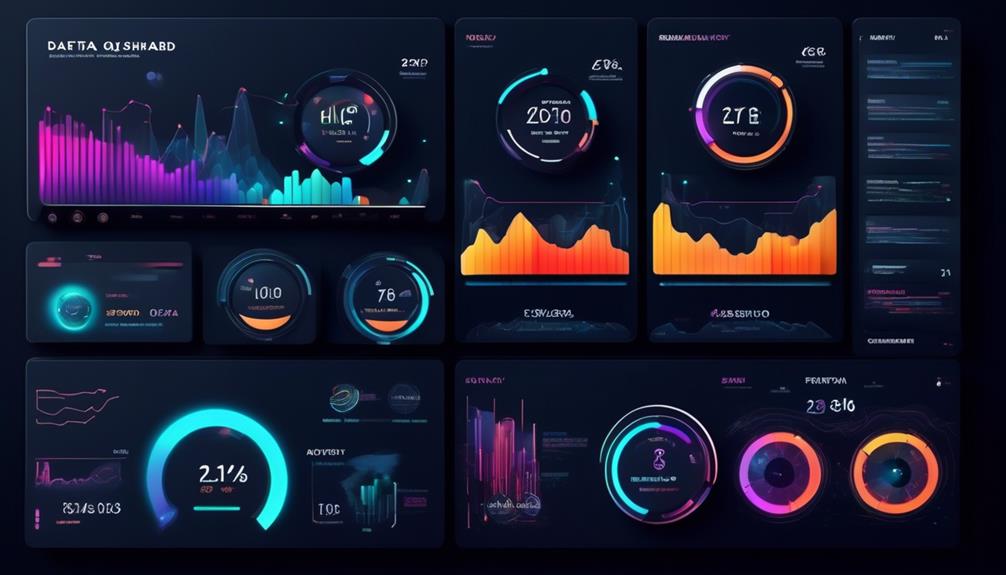Are the **emerging trends** in software quality assurance (SQA) for 2024 shaping the future of software quality assurance in the United States? Wondering what’s in store for the future of SQA? Let’s explore how these upcoming trends can impact the software quality landscape in the coming years. Dive in to uncover how the industry is evolving and the exciting possibilities that lie ahead. Don’t miss out on discovering the latest developments that could revolutionize software quality assurance as we know it!
As we navigate through the rapidly evolving landscape of technology and development, it becomes increasingly vital to stay abreast of the latest trends and advancements in SQA.
From the integration of AI and machine learning to the adoption of shift-left testing methodologies, the upcoming trends in SQA are poised to revolutionize the way we approach software quality assurance.
But what exactly do these trends entail, and how will they impact the industry?
Let's explore the significant shifts and innovations that are set to define SQA in 2024 and beyond.
Key Takeaways
- Increased integration of AI and machine learning in SQA
- Growing importance of automation testing for improved efficiency and accuracy
- Focus on security testing to ensure resilience and integrity
- Shift-left testing approach to identify defects early and enhance software quality
Shift-Left Testing
Shift-Left Testing revolutionizes software quality assurance by integrating testing activities early in the development lifecycle, fostering collaboration between developers and testers for higher quality outcomes.
This emerging trend in software QA emphasizes the importance of shifting testing techniques and processes to the left, meaning testing earlier in the development cycle. With technological advancements, especially in cloud-based testing, QA teams can now leverage tools and platforms to conduct testing activities much earlier in the software development process.
By doing so, defects can be identified and addressed at their inception, resulting in more efficient and cost-effective resolution. Additionally, the integration of (AI) in testing has further enhanced the capabilities of Shift-Left Testing, allowing for automated test case generation, intelligent defect detection, and predictive analytics. This has significantly improved the accuracy and effectiveness of testing activities, ultimately leading to higher quality software products.
As organizations continue to adopt Shift-Left Testing, the collaboration between developers and testers becomes more seamless, ultimately driving the overall improvement of software quality.
Artificial Intelligence (AI) and Machine Learning

The integration of Artificial Intelligence (AI) and Machine Learning in software quality assurance has revolutionized testing processes, empowering organizations to analyze large amounts of data and predict software defects for improved quality outcomes.
The AI and Machine Learning in SQA landscape for 2024 brings forth several critical advancements:
- Enhanced Predictive Analysis: AI algorithms are adept at analyzing vast datasets to identify patterns, enabling predictive analysis in testing. This capability allows for the proactive detection of potential software defects, leading to preemptive measures for improved software quality.
- Automation of Testing Tasks: AI-powered testing tools automate repetitive tasks, such as test case generation and execution, leading to improved efficiency, test coverage, and accuracy.
- Data-Driven Decision Making: With the integration of AI and ML, SQA leverages data-driven decision-making to enhance testing processes. This ensures that testing strategies are based on robust insights derived from the analysis of large volumes of data.
- Improved Test Case Generation: The emergence of AI and ML in testing presents new opportunities for generating better test cases, test scripts, and reports. These technologies aid in creating comprehensive and effective test scenarios, thus enhancing the overall testing process.
The incorporation of AI and Machine Learning in SQA for 2024 signifies a significant shift towards leveraging new technologies to drive digital transformation and improve software quality.
Automation Testing
With the advancements in Artificial Intelligence (AI) and Machine Learning shaping the landscape of software quality assurance, the focus now turns to the pivotal role of Automation Testing in streamlining testing processes and ensuring improved efficiency and reliability of results.
Automation testing is instrumental in enhancing the quality of software through the automation of repetitive testing tasks. By employing automation, organizations can achieve consistent and reliable results, leading to improved efficiency in the testing process. Furthermore, automation reduces regression testing time and aids in the early identification of defects and performance issues, resulting in higher quality software.
As organizations increasingly invest in automation frameworks and tools, the role of automation testing in improving test coverage and accuracy becomes even more pronounced. The emergence of automation testing as a critical component in software development underscores its significance in ensuring the delivery of high-quality software products.
This trend highlights the increasing reliance on automation to meet the evolving demands of software testing and quality assurance.
Data Quality

Amidst the ever-growing complexity of software systems, the crucial role of data quality in ensuring accurate and reliable information can't be overstated. As Quality Assurance (QA) continues to evolve, new tools and techniques are emerging to address the increasing importance of data quality in software development. Here are some key insights into the current trends in data quality:
- Assessment and Maintenance: Data quality involves the ongoing assessment and maintenance of the accuracy, completeness, consistency, and reliability of data, ensuring that it remains dependable and trustworthy.
- Techniques for Improvement: Techniques such as data profiling, cleansing, and standardization are being increasingly utilized to enhance data quality, enabling organizations to derive more accurate insights from their data.
- Implications of Poor Data Quality: Poor data quality can lead to serious issues, including incorrect analytics, flawed decision-making, and unreliable system functionality, highlighting the critical role that data quality plays in software reliability.
- Regulatory Compliance and Trustworthiness: Data quality is essential for compliance with regulatory standards and for ensuring the trustworthiness of business insights and operations, making it a cornerstone of effective Quality Assurance.
Mobile Testing

In the context of evolving software quality assurance, data quality's significance extends to the realm of mobile testing, where ensuring the reliability and security of applications across diverse devices and platforms is paramount. Mobile testing encompasses various aspects such as functionality, usability, and security, and it is crucial for delivering high-quality mobile applications. To provide a clearer picture of the current landscape of mobile testing, the following table outlines key elements and considerations in this domain:
| Mobile Testing | Key Aspects | Importance |
|---|---|---|
| Functionality Testing | Ensuring app functions well | Critical for user satisfaction and retention |
| Usability Testing | Focus on user experience | Impacts user adoption and overall app success |
| Security Testing | Ensuring data protection | Essential for safeguarding user and app data |
| Compatibility Testing | Testing across devices | Ensures app works seamlessly on various devices |
| Automation Testing Tools | Efficient testing processes | Accelerates testing and enhances test coverage |
Exploratory testing enables thorough examination of app functionalities, while automation testing tools streamline the testing phase. Security testing is critical due to the increasing number of software failures and the expansion of the Internet of Things (IoT) in mobile app development. Therefore, prioritizing mobile testing is paramount for delivering reliable and secure applications in the ever-evolving landscape of mobile technology.
Robotic Process Automation

As I explore the subtopic of Robotic Process Automation (RPA), it's clear that RPA has significant implications for Software Quality Assurance (SQA).
The automation benefits offered by RPA in SQA, such as reduced manual intervention and improved accuracy, are undeniable.
Moreover, the future development of RPA in SQA is poised to revolutionize testing processes and enhance overall software quality.
RPA in SQA
Utilizing RPA (Robotic Process Automation) in SQA (Software Quality Assurance) revolutionizes the testing process by automating repetitive tasks and enhancing test coverage and accuracy. Here are key insights into the impact of RPA in SQA:
- Automated Testing: RPA tools automate test execution, resulting in improved efficiency and faster delivery of test results.
- Test Coverage: RPA enhances test coverage by efficiently executing tests across various test environments and configurations.
- Regression Testing: RPA in SQA reduces the time and effort required for regression testing, ensuring comprehensive validation of software updates.
- Artificial Intelligence: RPA assists in identifying defects and performance issues through automated testing, leveraging AI capabilities for enhanced accuracy and precision.
The integration of RPA in SQA reflects one of the most significant emerging trends in software testing, optimizing processes and improving overall software quality.
Automation Benefits
Building on the transformative impact of RPA in SQA, the automation benefits of Robotic Process Automation significantly enhance test coverage and accuracy, streamlining repetitive tasks and boosting overall efficiency.
RPA leverages AI and machine learning to automate manual test cases, leading to improved software quality.
By automating repetitive tasks, RPA reduces the time and effort required for regression testing, allowing QA teams to focus on more complex and critical testing aspects.
Furthermore, RPA identifies defects and performance issues, contributing to the overall enhancement of software quality.
As organizations increasingly invest in RPA frameworks and tools, the latest trends in SQA embrace efficient automation to achieve higher productivity and superior testing outcomes.
The integration of RPA in SQA represents a significant leap towards optimizing testing processes and ensuring robust software quality.
Future Development
Evolving with advanced capabilities, Robotic Process Automation (RPA) is poised to revolutionize complex business processes in the near future, integrating AI and machine learning for enhanced cognitive automation and decision-making.
Expanded Capabilities: RPA will handle a broader range of tasks and processes, leading to increased adoption across industries.
User-Friendly Design: RPA systems will focus on intuitive interfaces for easy adoption and management by non-technical users.
Streamlined Operations: RPA will play a significant role in improving efficiency and reducing human error across various business functions.
Integration with AI: RPA solutions will continue to integrate with AI and machine learning to ensure continuous improvement and better decision-making.
These trends in software testing reflect RPA's essential role in the latest trends in software, developed to generate better tests, especially in areas of high risk, and ensure continuous improvement in the industry.
Security Testing

Security testing plays a crucial role in identifying vulnerabilities and ensuring data protection in software systems. As software tools and algorithms are developed at a rapid pace, security testing must keep up with the advancements to detect faults and deliver high-quality software. In today's QA environment, thorough testing is required for various devices and operating systems, especially for complex mobile and IoT devices. Security testing focuses on interoperability and uses emulators, simulators, and real devices for comprehensive testing. It involves testing under different loads and stress conditions to ensure robustness. Some of the tools commonly used in security testing include load balancers, penetration testing, and vulnerability scanners. To provide a clearer picture, below is a table depicting the key aspects of security testing.
| Aspect | Description | Importance |
|---|---|---|
| Vulnerability Scans | Identifies weaknesses in the system and potential entry points. | Critical for security |
| Load Balancers | Helps distribute traffic evenly across servers to prevent overload. | Ensures system stability |
| Interoperability | Focuses on the ability of systems to work together seamlessly. | Essential for diverse environments |
This evolution in security testing ensures that modern software systems are resilient against potential threats and vulnerabilities, ultimately enhancing overall system reliability and integrity.
Exploratory Testing

I find Exploratory Testing to be a fascinating approach that offers various benefits, such as the ability to improvise test cases and adapt to changes in the software.
This method aligns well with agile testing principles, allowing for quick feedback and uncovering defects that may be missed in scripted testing.
It's a valuable technique that leverages testers' domain knowledge and intuition to explore the software thoroughly.
Exploratory Testing Benefits
Exploratory testing offers a flexible and adaptive approach to uncover unexpected defects and areas of improvement in software, providing real-time feedback on its quality and uncovering critical issues early in the development process. Its benefits include:
- Rapid Pace: Allows for quick testing iterations, especially beneficial in agile and fast-paced development environments.
- Various Industries: Applicable across diverse industries, from finance to healthcare, due to its adaptability and effectiveness.
- Save Time: Identifies critical issues early, saving time and resources in the long run.
- Amounts of Data: Well-suited for testing scenarios involving large amounts of data, where scripted testing may fall short.
Incorporating exploratory testing benefits into testing strategies can lead to significant improvements in software quality and is set to be a prominent trend in the next few years.
Test Case Improvisation
Amid the dynamic landscape of software testing, test case improvisation, an integral aspect of exploratory testing, plays a pivotal role in uncovering real-time defects and driving continuous software improvement. This approach allows testers to adapt to evolving software requirements, encouraging creativity and critical thinking in the testing process. Here's how test case improvisation contributes to software quality:
| Benefits of Test Case Improvisation |
|---|
| Helps detect real-time defects |
| Allows testers to optimize their testing |
| Encourages adaptability to changing scenarios |
| Drives continuous improvement |
| Facilitates exploration of new features |
Test case improvisation is crucial as development continues, enabling functional testing without the constraints of pre-defined test design, thereby contributing to the overall software quality and user satisfaction.
Agile Test Approach
Continuously adapting to evolving software requirements, the Agile Test Approach, particularly Exploratory Testing, emphasizes adaptability and learning throughout the testing process. This approach aligns with emerging trends in SQA and QA, offering new opportunities for support teams in mobile apps and web development. Here's why it's gaining traction:
- Simultaneous Learning and Testing: Testers can explore the software and report findings in real-time, enhancing the overall testing process.
- Ideal for Rapidly Changing Projects: Agile Test Approach focuses on uncovering critical issues early in the development cycle, making it suitable for dynamic projects.
- Tester Intuition and Domain Knowledge: This approach leverages tester intuition and domain knowledge to discover defects, promoting creativity and critical thinking.
- Collaboration and Creativity: It encourages collaboration, creativity, and adaptability, fostering a more dynamic testing environment.
This approach also holds promise for integration with intelligence (AI) tools, further enhancing its potential impact.
Frequently Asked Questions
What Is the Future of Qa?
The future of QA is dynamic, driven by AI, ML, and agile methodologies. It emphasizes early defect detection through Shift-Left Testing and relies heavily on automation for efficiency.
As mobile and IoT applications expand, QA will focus on delivering reliable and secure software.
Embracing continuous testing in DevOps environments is crucial for faster delivery.
The evolution of QA demands adaptability and proficiency in advanced testing technologies for ensuring high-quality software.
What Is New in Quality Assurance?
In quality assurance, the latest trends focus on AI for data analysis, defect prediction, and automated testing. Shift-Left Testing emphasizes early collaboration, while Test Automation speeds up processes.
Agile and DevOps Testing integrate testing into development, improving software delivery. Performance and Security Testing ensure robust applications.
These trends reflect a shift towards proactive, collaborative, and automated approaches, aligning with the demand for faster, high-quality software.
What Is New in Software Testing in the Digital Era?
In software testing, AI and machine learning are revolutionizing defect prediction and test automation. Shift-left testing encourages a culture of quality from the start. Agile and DevOps testing facilitate continuous testing for rapid software delivery.
Emerging trends in software testing include mobile and IoT testing, performance and security testing, cloud-based testing, and test metrics and analytics. These trends reflect the digital era's demand for faster, more efficient, and higher quality software testing practices.
What's New in Software Testing?
What's new in software testing?
AI and machine learning are revolutionizing defect prediction and task automation.
Shift-Left Testing promotes early defect identification and developer involvement.
Test automation remains crucial for efficiency.
Agile and DevOps testing emphasize continuous integration and collaboration.
Mobile and IoT testing focus on thorough device and platform testing.
These trends reflect a shift toward more proactive, integrated, and efficient testing methodologies in the digital era.
Conclusion
In conclusion, the emerging trends in SQA for 2024 are revolutionizing the way we approach software testing. With the adoption of AI and machine learning, shift-left testing, and automation, we're able to identify defects earlier, improve efficiency, and deliver high-quality software at a faster pace.
The integration of Agile and DevOps methodologies, along with the focus on mobile, IoT, and security testing, ensures that we're meeting the demands of the ever-evolving technological landscape. These trends are shaping the future of software quality assurance.









